Hawthorn, planting guide and care work
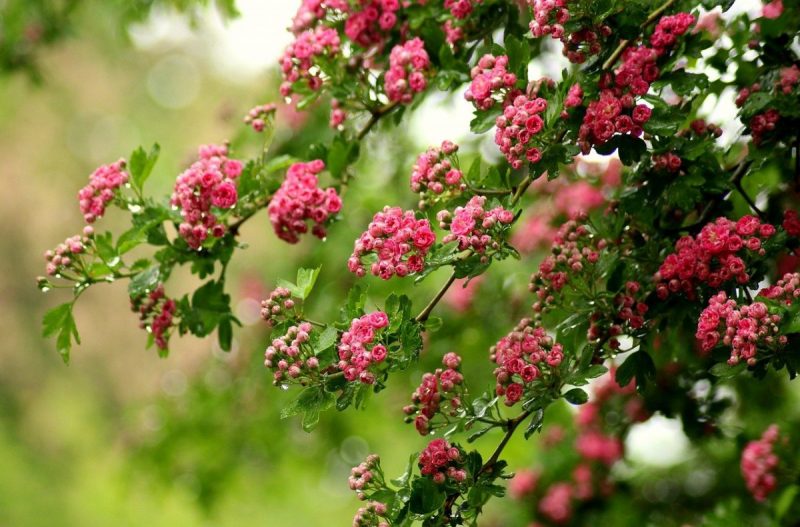
Hawthorn (Crataegus sp.) is part of the order Rosales, family Rosaceae, genus Crataegus. The genus mostly includes shrubs, but also several tree species. The tendrils usually have thorns, the leaves are lobed and feather-like, and the flowers are arranged in multi-flower corymbs (bouquets). The fruits are small, with 1-5 seeds. Typically, remains from the dried calyx can be seen on the top of the fruit.
Species and varieties
Many hawthorn species have been identified so far (over 300), from which many hybrid species have been obtained. Below are presented the species that have been frequently cultivated for ornamental purposes.
Crataegus monogyna (common hawthorn, oneseed hawthorn)
A shrub or tree with maximum heights of 8-10 m, which grows spontaneously in forests with sparse trees or at their edge, is spread both in the lowland and in the hilly and mountainous areas. Characteristically, the trunk is crooked, sinuous, irregular, with thorns that are approx. 1 cm long. The leaves are glossy on the topside and have 3-7 irregular lobes. The small flowers, white (rarely light pink) and with a specific, strong smell, are grouped in flowering corymbs. The fruits are red, round approx. 1 cm long. They are edible, have a bland taste and have a strong, bony core.
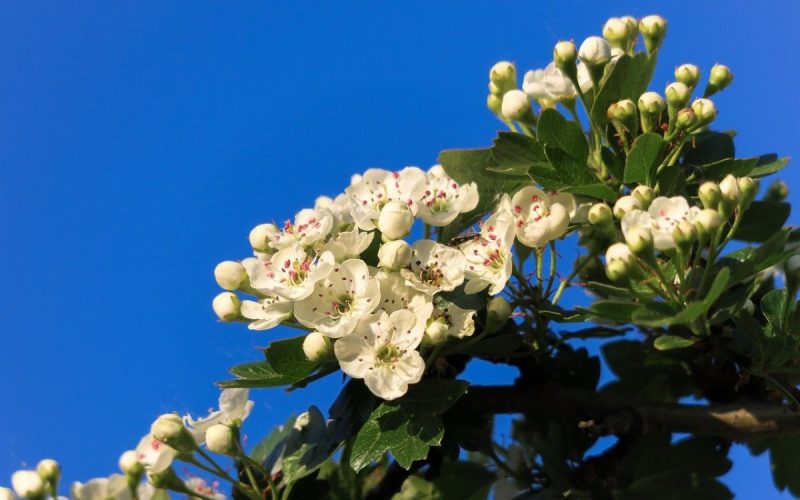
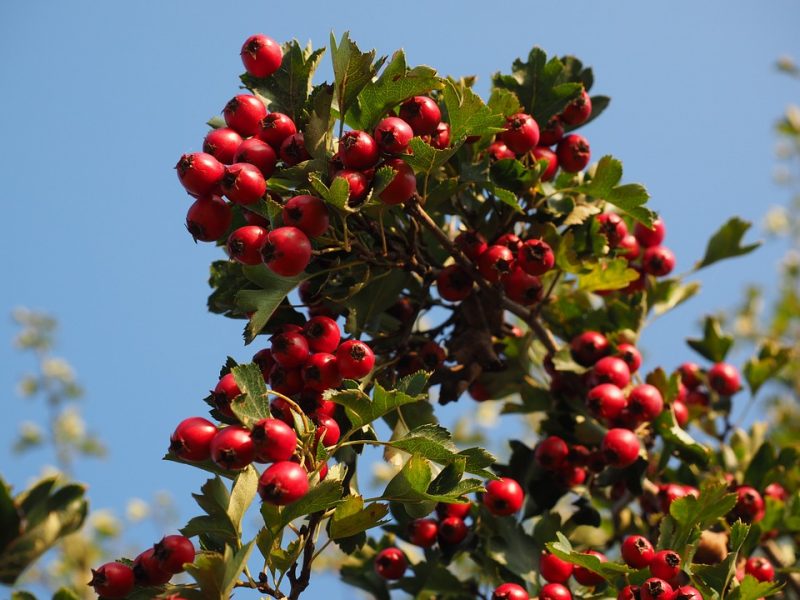
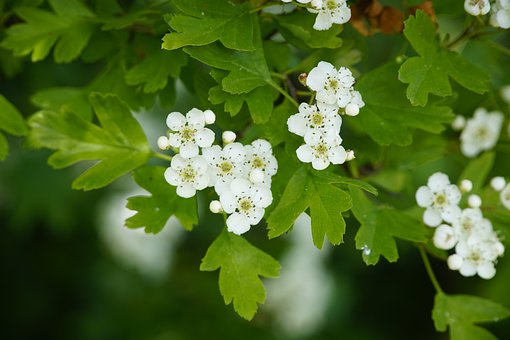
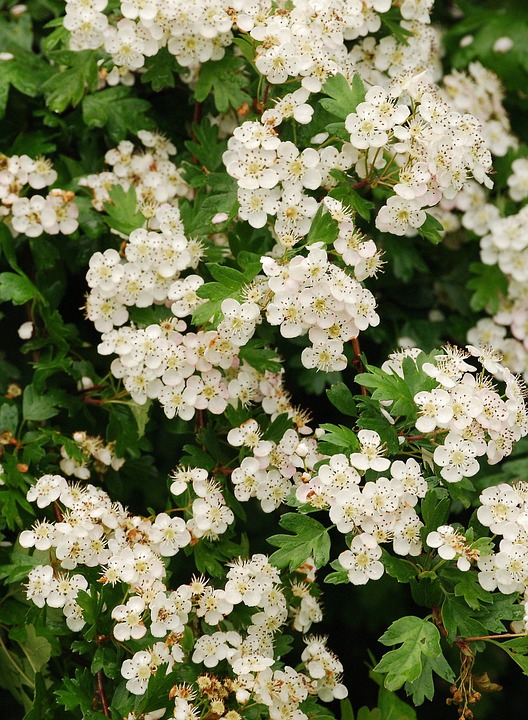
Varieties:
- Crataegus monogyna var. pendulum – with thin and flexible branches, pendant;
- Crataegus monogyna var. splendens – with dark green, leathery and shiny leaves;
- Crataegus monogyna var. rosea – with pink flowers;
- Crataegus monogyna var. semperflorens – with continuous or repeated flowering during the summer;
- Crataegus monogyna var. heterophylla – with leaves of different shapes on the same specimen or branch.
Crataegus laevigata (midland hawthorn)
In some books, it can be found under the scientific name of Crataegus oxyacantha or Crataegus oxyacanthoides, synonymous names that have provoked much discussion on correctness.
It is a shrub that can reach a height of up to approx. 5 m, sporadically found in the lowland and hilly areas. It has small leaves (2-5 cm long), usually with 3 lobes (rarely 5). The fruits are red, with 2 seeds (rarely 3).
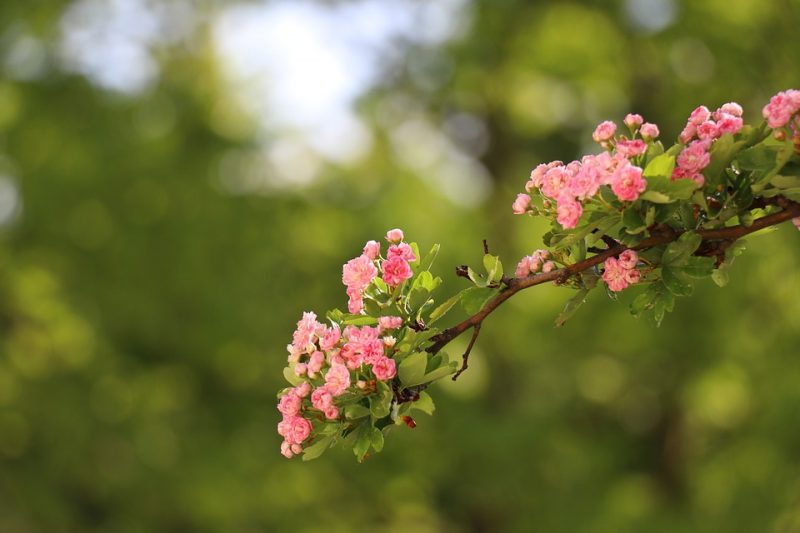
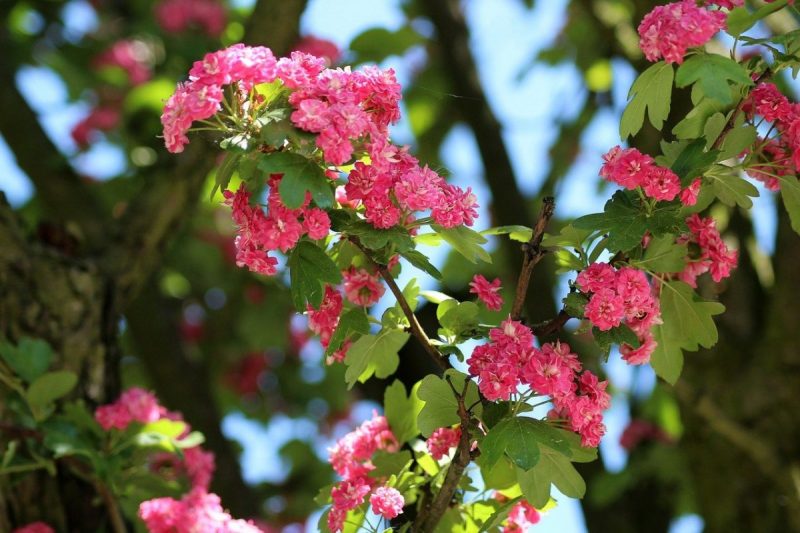

Varieties:
- Crataegus laevigata var. pauli (Paul’s Scarlet, with red flowers);
- Crataegus laevigata var. red (with the outer edges of the petals light pink);
- Crataegus laevigata var. candidoplena (with rich inflorescences and white flowers)
- Crataegus laevigata var. full (with rich inflorescences and white, double flowers).
Crataegus pentagyna (small-flowered black hawthorn)
A shrub of up to approx. 5 m high. Characteristically, the tendrils and young leaves are pubescent. The leaves have 3-7 lobes. The fruits are blackish-dull in color and have 5 seeds with three edges.
Crataegus nigra (black hawthorn)
A shrub that is approx. 5 m high, native to South-Eastern Europe. It has whitish-pubescent tendrils and hairy leaves, especially on the underside. From the white or pink flowers develop the black, shiny fruits with 5 seeds.
Crataegus sanguinea
A shrub native to Northern Asia, with heights of up to 5-6 m. The tendrils have few thorns (and sometimes not at all). The fruits are red and shiny.
Crataegus pinatifida (mountain hawthorn)
A shrub or small tree, native to East Asia. It has few thorns (and sometimes not at all) and large fruits, up to approx. 4 cm long.
Crataegus crus-galli
A tree native to North America, which can reach heights of up to 10 m and it has numerous long thorns on the stem, branches and tendrils. The leaves are whole, unlobed, leathery and up to 10 cm long. In autumn they turn red-orange. The fruits are initially green, after which they turn dull red and remain attached to the crown of the tree until late autumn.
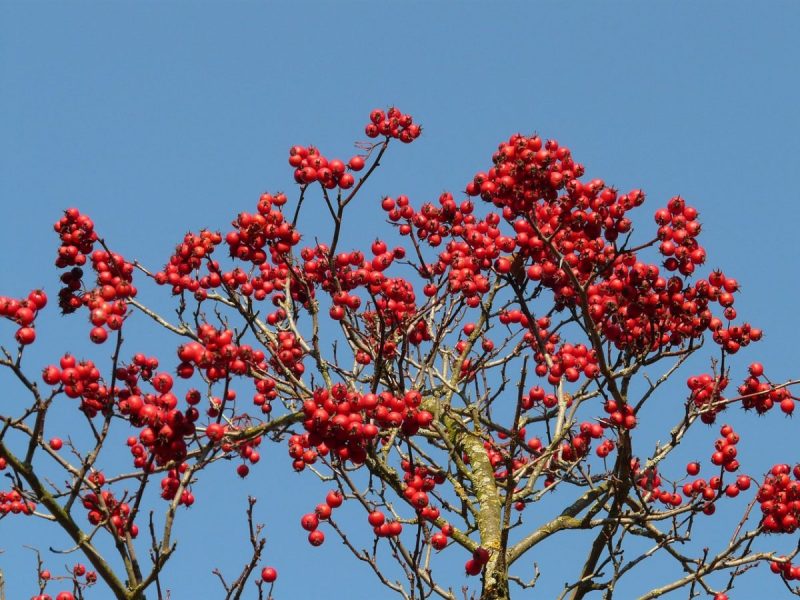
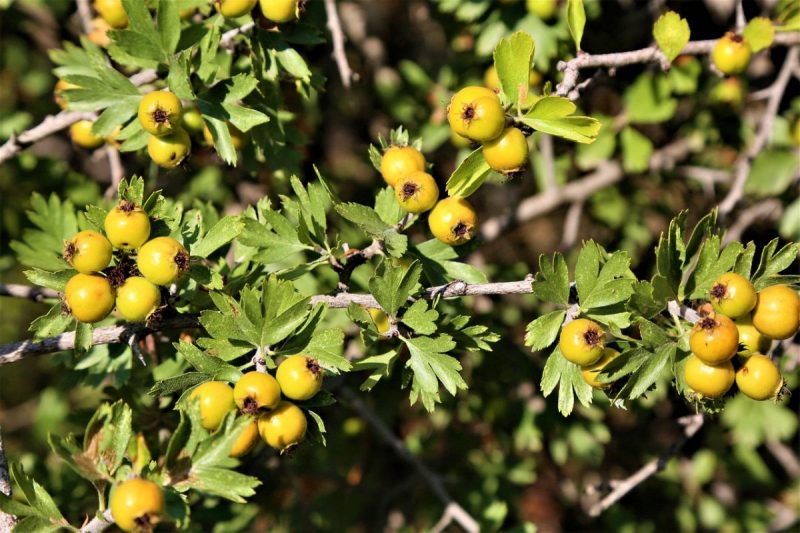
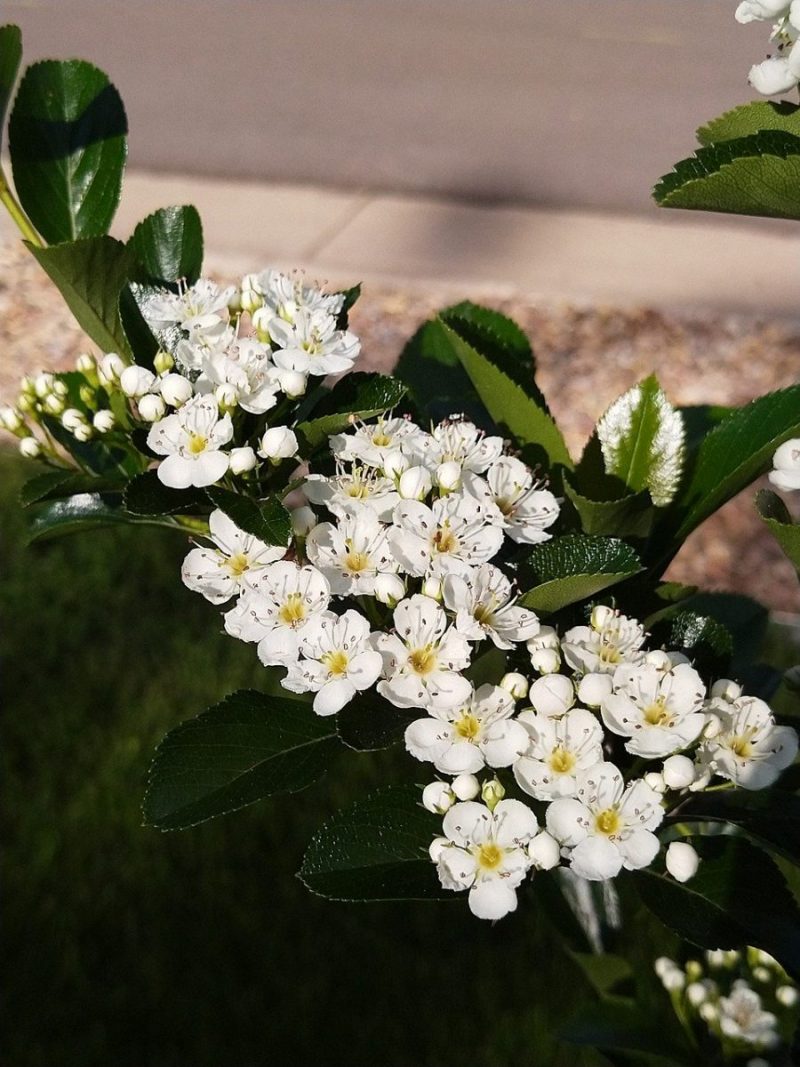
Environmental conditions
Light. Hawthorn species grow well in direct sunlight or partial shade.
Temperature. Crataegus monogyna and C. laevigata are species that tolerate both high temperatures and frost and freeze. C. Pentagyna and C. Nigra are adapted to mild climatic conditions, while C. pinatifida is a species adapted to low temperatures.
Soil. Hawthorn species are not pretentious to edaphic conditions, being frequently found in shallow, skeletal, or compact soils. Still, it grows best in calcareous, well-drained soils.
Care
Watering. It can withstand well drought and dryness in the soil. However, during periods of very high temperatures, small amounts of water can be administered at long intervals, especially in the first year after planting.
Fertilization. For vigorous growth and rich flowering, specific fertilizers can be applied.
Recommended products
-
You can find products on a different store
Change Store -
You can find products on a different store
Change Store -
You can find products on a different store
Change Store -
You can find products on a different store
Change Store -
You can find products on a different store
Change Store -
You can find products on a different store
Change Store -
You can find products on a different store
Change Store -
You can find products on a different store
Change Store -
You can find products on a different store
Change Store -
You can find products on a different store
Change Store -
You can find products on a different store
Change Store -
You can find products on a different store
Change Store -
You can find products on a different store
Change Store -
You can find products on a different store
Change Store -
You can find products on a different store
Change Store -
You can find products on a different store
Change Store -
You can find products on a different store
Change Store -
You can find products on a different store
Change Store -
You can find products on a different store
Change Store -
You can find products on a different store
Change Store -
You can find products on a different store
Change Store -
You can find products on a different store
Change Store -
You can find products on a different store
Change Store -
You can find products on a different store
Change Store
Pruning. It can withstand shape correction and maintenance cuts well. Through repeated pruning, spectacular hedges can be formed, with special thorns, flowers, and fruits.
Recommended products
-
You can find products on a different store
Change Store -
You can find products on a different store
Change Store -
You can find products on a different store
Change Store -
You can find products on a different store
Change Store -
You can find products on a different store
Change Store -
You can find products on a different store
Change Store -
You can find products on a different store
Change Store -
You can find products on a different store
Change Store -
You can find products on a different store
Change Store -
You can find products on a different store
Change Store -
You can find products on a different store
Change Store -
You can find products on a different store
Change Store -
You can find products on a different store
Change Store -
You can find products on a different store
Change Store -
You can find products on a different store
Change Store -
You can find products on a different store
Change Store -
You can find products on a different store
Change Store -
You can find products on a different store
Change Store -
You can find products on a different store
Change Store -
You can find products on a different store
Change Store -
You can find products on a different store
Change Store -
You can find products on a different store
Change Store -
You can find products on a different store
Change Store -
You can find products on a different store
Change Store
Planting. Hawthorn seedlings are planted preferably in spring or autumn.
Recommended products
-
You can find products on a different store
Change Store -
You can find products on a different store
Change Store -
You can find products on a different store
Change Store -
You can find products on a different store
Change Store -
You can find products on a different store
Change Store -
You can find products on a different store
Change Store -
You can find products on a different store
Change Store -
You can find products on a different store
Change Store -
You can find products on a different store
Change Store -
You can find products on a different store
Change Store -
You can find products on a different store
Change Store -
You can find products on a different store
Change Store -
You can find products on a different store
Change Store -
You can find products on a different store
Change Store -
You can find products on a different store
Change Store -
You can find products on a different store
Change Store -
You can find products on a different store
Change Store -
You can find products on a different store
Change Store -
You can find products on a different store
Change Store -
You can find products on a different store
Change Store -
You can find products on a different store
Change Store -
You can find products on a different store
Change Store -
You can find products on a different store
Change Store -
You can find products on a different store
Change Store
Propagation. It can be propagated through germination (from seeds) or vegetatively (through cuttings or grafting). In the case of seed propagation, they must be layered for one year, being sown only in the autumn of the year following the harvest.
Diseases and pests. Hawthorn can be affected by pests such as aphids and lice, Japanese beetles (Popillia japonica), hawthorn sawfly leaf miners (Profenusa canadensis), roundheaded appletree borers (Saperda candida), Corythucha cydoniae, etc. The most common diseases in hawthorn are rust, spots, and fire blight, caused by fungi or bacteria. It is recommended to apply preventive and control treatments, with specific insecticides and fungicides.
In addition:
- hawthorn is a species with a long lifespan and can reach ages of hundreds of years (300-500 years);
- it can withstand exposure to strong winds well;
- due to the dense branches and the existence of thorns, it is a species suitable for cultivation in forest protection curtains, hedges and street alignments (which block the passage);
- hawthorn leaves, flowers and fruits are used in pharmacology: medicines, infusions, tinctures.















































































































































































































































































































































































































































